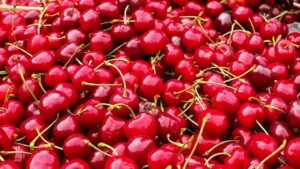Research into the relationship between bacterial diseases and host plants could lead to improvements in breeding for disease resistance in horticultural crops says research organisation NIAB EMR.
Bacterial canker is a disease caused by Pseudomonas syringae, a bacteria that infect the stems, fruits and leaves of plums, cherries and related Prunus species. It is one of the few important plant diseases caused by bacteria in the UK. It is a serious disease and can kill large branches or whole trees.
Work by scientists at NIAB EMR and the University of Reading confirmed that the pathogen Pseudomonas syringaecan be divided into key pathovars or groups, each with potentially contrasting methods of infecting and causing disease on cherry trees. Different cultivars respond to the groups in different ways, some showing broad resistance, while others may display only narrow resistance to a single group. The research work, funded by the East Malling Trust and the University, could be used across a wider range of horticultural crops in breeding for enhanced disease resistance and in the development of rapid diagnostic tools.
Different groups of the bacterial canker have also been found to independently ‘adopt’ the same genes to infect the host plant, in a classic case of convergent evolution. Commenting on further Biotechnology and Biological Sciences Research Council (BBSRC) funded work, NIAB EMR pathologist Dr Michelle Hulin says, “In much the same way that antibiotic resistance spreads in human and animal pathogens on mobile genetic elements such as plasmids, we have discovered that key factors controlling compatibility with a host, in this case cherry, are spread using similar mechanisms.”
The UK cherry market has expanded rapidly in recent years, though the management and control of bacterial canker remains an especially challenging problem. The role of key genes in the disease and the understanding of how they infect host plants, is now enabling breeders to better choose parents to breed from, which have resistance to all disease-causing pathogen groups and to select new varieties with the broadest disease resistance capability.
“These studies pave the way for horticultural crops, such as cherry, to be bred with far greater disease resistance than has been previously possible,” explains Dr Richard Harrison, NIAB EMR’s Head of Genetics, Genomics and Breeding. “The horticultural sector faces challenges from many bacterial diseases across a wide range of crops, but because of the potential for resistance, the use of antibiotics to control bacterial diseases in plant production is not permitted and so in many cases we rely on ‘inbuilt’ resistance from the plant’s own immune system.”
Source: NIAB













